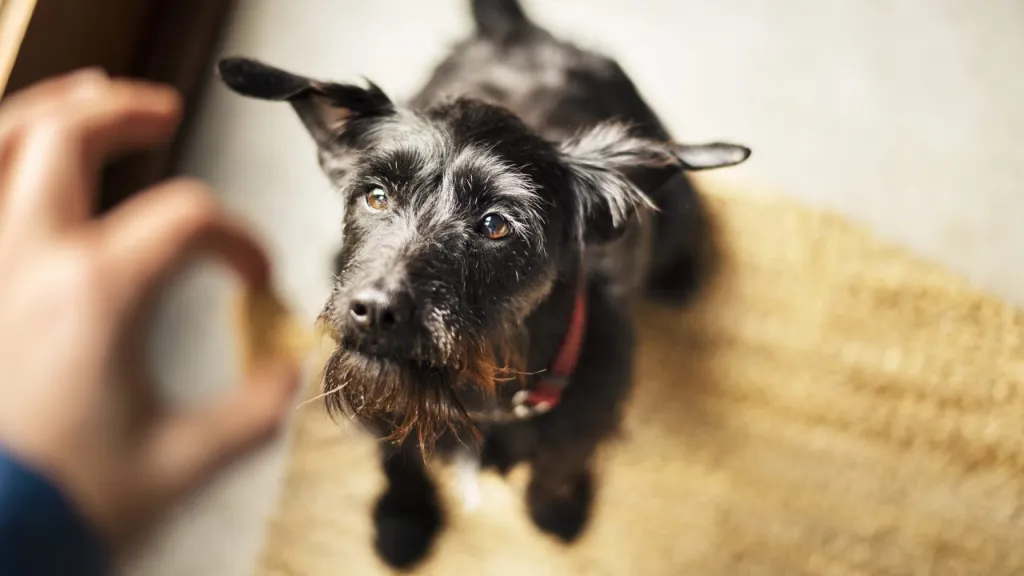Whether you have a brand-new puppy or recently adopted an older dog, you’ve likely come across the term “positive reinforcement” when looking up training techniques. But, what is positive reinforcement training, and how can it help you and your dog? Here’s more about this popular training method.
What is positive reinforcement?
There are four “quadrants” when it comes to training and learning. Positive, negative, reinforcement, and punishment. Positive and negative refers to the addition and subtraction of something, such as giving a treat or taking away a toy. Reinforcement and punishment refer to increasing or decreasing the behavior. Reinforcement increases the behavior, while punishment decreases it.
Positive reinforcement training is a method that promotes good behaviors through reinforcement with treats, toys, and praise. It also helps build confidence over fear by using methods that encourage your dog to want to work with you, instead of being fearful of you. Positive reinforcement can also help improve the human-animal bond by building trust between you and your dog.
How is positive reinforcement training different from other training methods?
Positive reinforcement works by rewarding good behaviors, while deterring negative ones through redirection. It doesn’t rely on fear, pain, or negative methods to get your dog to do what you want. Rather than hurting your dog or taking something away when they do something bad, positive reinforcement methods turn that behavior into something good.
For example, your dog might bark at guests entering the home. You can instead start asking your dog to sit when a guest arrives, giving them a treat when they are calm. Rewarding them with a treat encourages them to sit when they see a guest arrive, redirecting the negative barking into a wanted behavior. It also prevents a loss of trust or an increase in fear that might happen if you yelled at them instead.
Tips for getting started on training
It’s easy to get started on positive reinforcement training. You’ll want to have the right tools on hand, such as a high-value treat or a favorite toy. In addition, having other items such as a long leash if working outside, or a treat pouch can help.
When training positive behaviors, you’ll want to capture it in the act, praising and treating when the behavior happens. This can be as simple as asking your dog to sit and then giving them a treat. Or, in more complicated cases, it may be rewarding your dog when they look away from the mailman outside or lay down quietly while you’re working on a task. The treat helps reinforce those behaviors, making them more likely to happen again.
How to find a positive reinforcement trainer
If you’re struggling with a problem behavior, or just want to have more guidance with training, a trainer versed in positive reinforcement methods is a great choice. Many offer group classes that can help with basic commands and socialization. Others may work on more serious issues, such as barking or anxiety. It’s best to check out websites such as the IAABC or your local veterinarian for listings of trainers to see which promote positive reinforcement methods. A meet-and-greet before you begin training can also help you determine if their techniques are right for you and your dog.
Positive reinforcement training is a great way to build trust with your dog while still achieving results. If you’re interested in learning more about training, check out whether a dog trainer or behaviorist is right for your dog. Or, check out these other training techniques.









